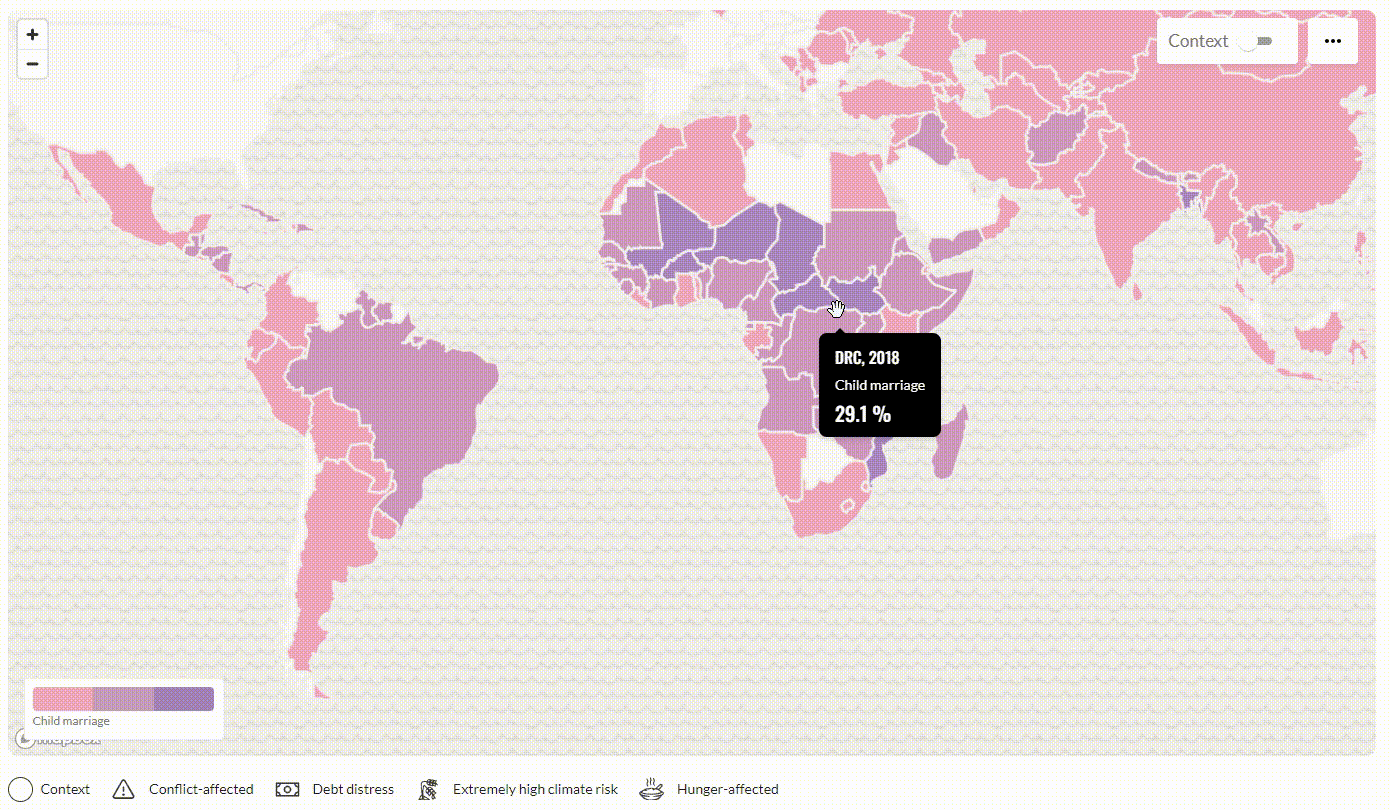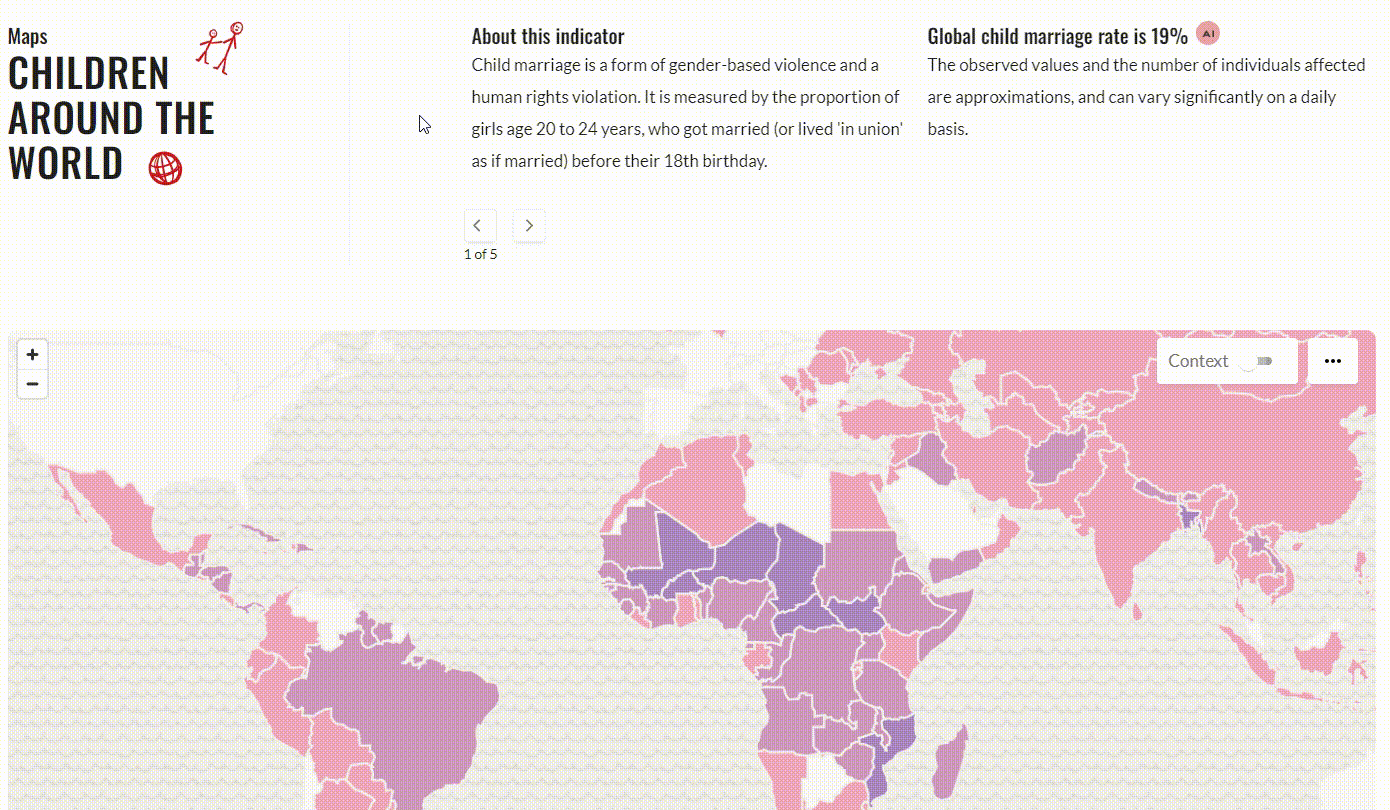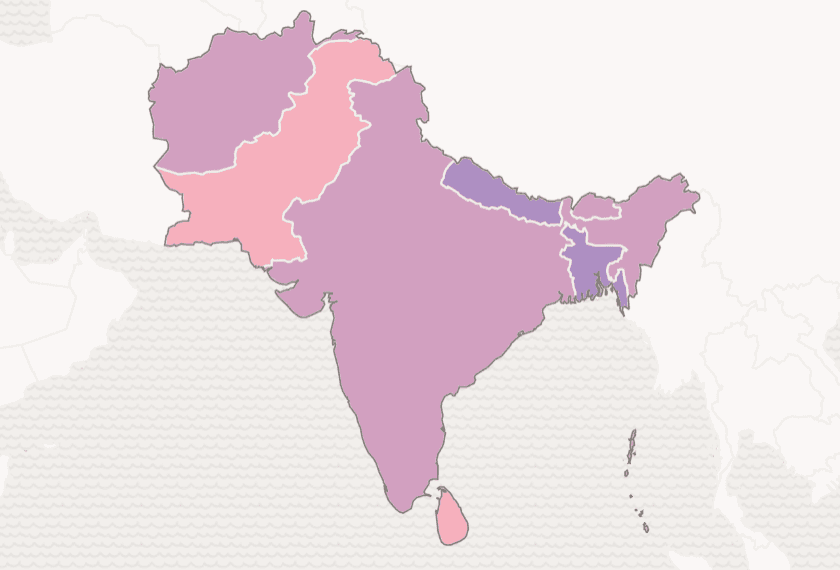
Contextual insights at your fingertips
Child rights are often particularly at risk in countries facing crises and insecurities. For instance, 183 million children across the world face the triple threat of high climate risk, poverty and conflict. The Child Atlas allows users to see how different topics overlap and relate to each other. However, we wanted to provide an even quicker visual indication of some of these background risks when browsing the Child Atlas, always providing context to the rich data we present.
A new function on the Child Atlas allows you to add information on contextual factors directly to the data you are viewing. When scanning the global or regional maps on the Atlas, you can activate the context toggle to see small marks indicating countries that face specific challenges. Hovering over the marks shows the exact type of crisis.

In our methodological note we describe in detail how we categorized countries as conflict- or hunger-affected, experiencing extremely high climate risk, or in debt distress. However, any contextual layer can only provide a shortcut and may obscure important differences and nuances between countries. Choosing a specific crisis or insecurity indicator as a second layer in the Child Atlas allows you to explore such relationships in more detail.
We also added more information about each indicator and links to related tools directly into the Child Atlas. We hope this helps explain why this data matters for children and helps you quickly find other valuable resources to dive deeper into individual data points. You can find all this information at the top of the Atlas page, directly above the map:
- ‘About this indicator’ provides a quick definition of the selected indicator and its relevance to children.
- AI-generated explainers summarize the data. Please interpret these with caution, as AI-generated content is clearly marked with a red AI symbol.
- ‘Other helpful tools’ links to external tools that provide more detailed data on this particular indicator or topic, helping you dive deeper if you need additional information.
- ‘Visit our resource center’ links directly to related resources, reports, toolkits, and guidance from Save the Children’s Child Rights Resource Centre. The Child Rights Resource Centre is an open digital library that hosts comprehensive, reliable, and up-to-date information on Save the Children’s and our partners’ work.

The Child Atlas puts high-quality, publicly available data at your fingertips. Crucially, it also contextualizes the wide range of different child topics and indicators by linking them to children’s voices and their own descriptions through our growing number of blogs and our experiments with AI-generated explainers and descriptions. We hope these new additions provide you with even further contextual information and links.
Related stories:
Related stories

How a Soap Opera Helped to Reduce Child Marriage
Child protection (CP)
Child protection (CP)
2025-12-09

Does Insurance Benefit Child Health? Lessons from 38 Countries
Health (HL)
2025-11-19